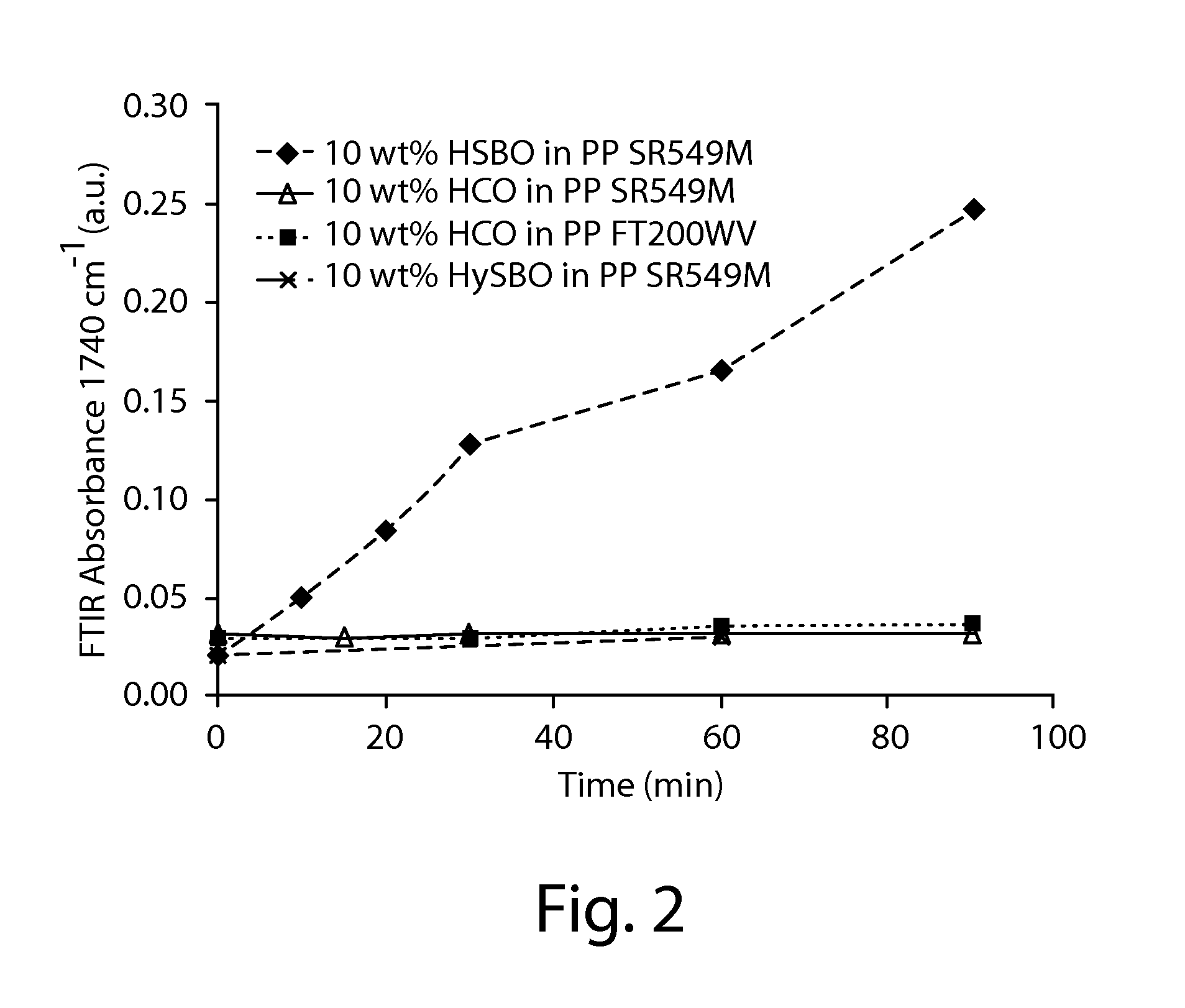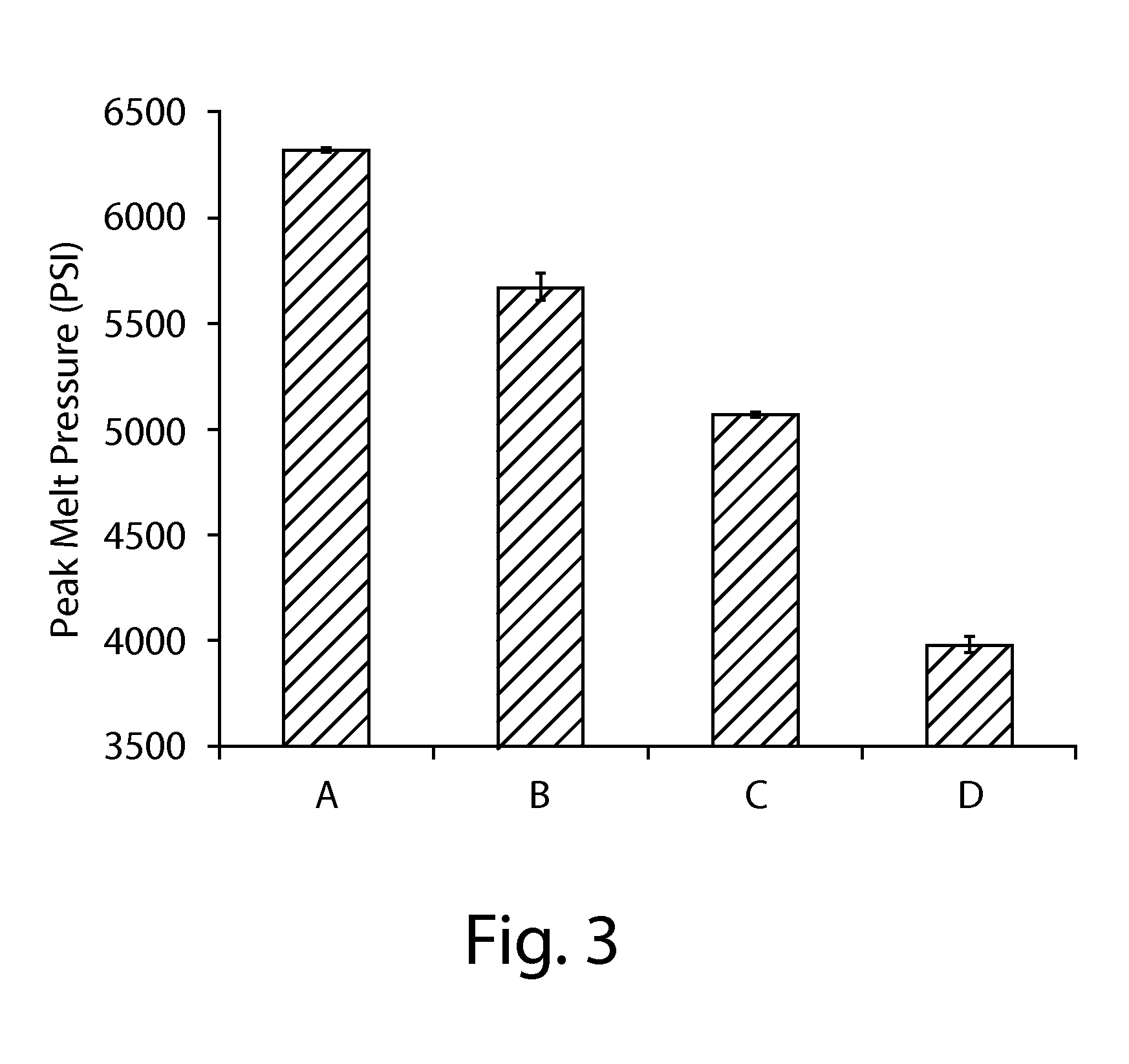Methods of Molding Thermoplastic Polymer Compositions Comprising Hydroxylated Lipids
a technology of hydroxylated lipids and compositions, applied in the direction of coatings, etc., can solve the problems of reducing manufacturing output, reducing formulation and processing challenges, and prohibiting large-scale commercial production
- Summary
- Abstract
- Description
- Claims
- Application Information
AI Technical Summary
Benefits of technology
Problems solved by technology
Method used
Image
Examples
examples
Materials
Polymers:
[0228]The primary polymers used in this work were polypropylene (PP) based, but other polymers can be used (see e.g., U.S. Pat. No. 6,783,854, which provides a comprehensive list of polymers that are possible, although not all have been tested). Specific polymers evaluated were:
[0229]Lyondell-Basell Profax SR549M clarified random copolymer polypropylene
[0230]Braskem FT200WV nucleated homopolymer polypropylene
Lipids: Specific lipids used were:
[0231]Hydrogenated Soy Bean Oil (“HSBO”) supplied by Stratas Foods.
[0232]Hydrogenated Castor Oil (“HCO”) supplied by Alnoroil Company, Inc.
[0233]Hydroxylated Soybean Oil (“HySBO”) manufactured internally by Procter &Gamble.
Synthesis of HySBO
Part A: Synthesis of Soybean Oil Derived Poly-Branched Poly-Olefin Containing Aldehyde
[0234]Equipment: The reactor used in this work was a Model Number 4563 Parr 600 ml reactor constructed of T316 stainless steel. It has a Magnetic Drive stirring assembly that uses an air motor for agitation...
PUM
| Property | Measurement | Unit |
|---|---|---|
| droplet size | aaaaa | aaaaa |
| droplet size | aaaaa | aaaaa |
| droplet size | aaaaa | aaaaa |
Abstract
Description
Claims
Application Information
 Login to View More
Login to View More - R&D
- Intellectual Property
- Life Sciences
- Materials
- Tech Scout
- Unparalleled Data Quality
- Higher Quality Content
- 60% Fewer Hallucinations
Browse by: Latest US Patents, China's latest patents, Technical Efficacy Thesaurus, Application Domain, Technology Topic, Popular Technical Reports.
© 2025 PatSnap. All rights reserved.Legal|Privacy policy|Modern Slavery Act Transparency Statement|Sitemap|About US| Contact US: help@patsnap.com



